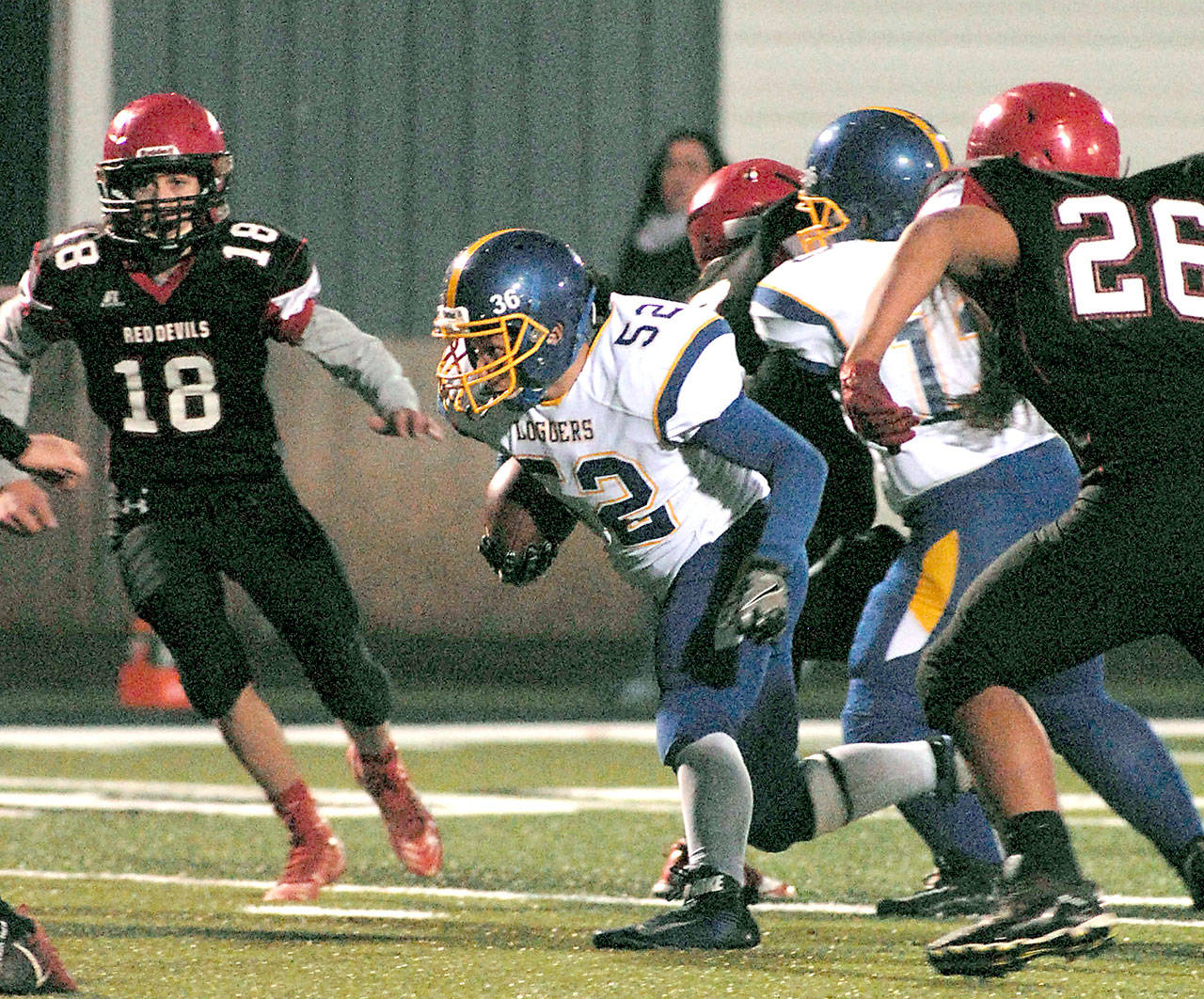PORT ANGELES — A two-year experiment in an attempt to achieve more competitive balance between high school teams will debut on football fields in Neah Bay and Joyce this fall.
A merger has been agreed to between Class 1B eight-man football teams in Northwest District 1, West Central District 3 and Southwest District 4.
District 1 and 3 (home to Neah Bay and Crescent) already combined to play in the Northwest Football League along with Lummi, Tulalip Heritage and until recent seasons, Lopez Island.
“The Coastal League, all the teams in District 4, they were having problems, some of the same problems as Clallam Bay has had, in building teams and playing highly unbalanced and non-competitive games,” Lummi athletic director and head football coach Jim Sandusky said.
“I suggested we combine leagues and form a 12-team league with two divisions. One division will have more of the higher developed teams that won’t have troubles with turnout and field teams that have stronger, more competitive programs.”
Until the WIAA recounts student numbers and sets classification numbers in 2020, the merger will play out like this: A North Division will consist of Lummi, Neah Bay, Naselle and Darrington, a school that recently had its appeal to drop from 2B to 1B denied by the WIAA. Darrington would not be eligible for postseason play.
Crescent will head up the West Division, along with Tulalip Heritage, Mary M. Knight, Taholah, Oakville, Washington School for the Deaf and Wishkah Valley and Lake Quinault, provided those last two schools can field football teams.
Clallam Bay, which has played six-man games the last two years due to low enrollment numbers, was not included.
“I taked with [Clallam Bay Principal] Kris Hanson and they were not added into the schedule because they aren’t likely to have the numbers to field an eight-man team,” Sandusky said. “The problem with adding teams who are unlikely to field full teams is you leave holes in the schedule and there’s nobody left to schedule to fill those holes. “
The two-division format would include two league games between North teams and one league game in the larger West Division.
“We will travel to Neah Bay, and Neah Bay also will travel to Lummi, Naselle and Darrington.,” Sandusky said.
“Would you rather travel a bit more distance and have a chance at a more competitive game or not have to travel as much and play those 60-6 games?”
Neah Bay Athletic Director Michael Brunstad has scheduled difficult non-league games for the Red Devils football (and boys and girls basketball) team in recent seasons as a way to prepare for the state tournament and as a hedge for a potential increase in enrollment that would bump Neah Bay up to Class 2B.
“We would see some increased travel [times and costs],” Brunstad said. “But every trip is a long haul for us.”
The switch to two divisions will eliminate a Neah Bay-Crescent football game this fall. The Red Devils have filled their non-league schedule with games Class 2B Morton-White Pass, Taholah and Quilcene.
Crescent football coach Brian Shimko didn’t like seeing Neah Bay come off his team’s schedule, but did agree with another aspect of the two-division format — a chance for a West team to move to the North if that team experiences success.
Sandusky said a promotion/relegation situation would be based on the number of seniors a team graduates, perceived strength of returning players, a coaches’ ranking and teams’ records from the previous season.
“Moving a team up or a team down is definitely possible,” Sandusky said.
Athletic directors in Sea-King District 2, which includes Quilcene, declined an invitation to join the other three districts and cover all 1B schools in Western Washington.
“That was part of the initial idea, to combine all four districts on this side of the state and have two divisions with eight or more teams,” Sandusky said.
As for the postseason picture, it stays much the same. North teams will receive three seeds to a quad-district postseason bracket, South teams will qualify five of its eight teams to the playoffs and District 2 will receive four playoff seeds.
“It won’t eliminate blowouts, it won’t cut out all of those 60-6 games, but it should decrease their numbers quite a bit and make for better experiences for our student-athletes.”

